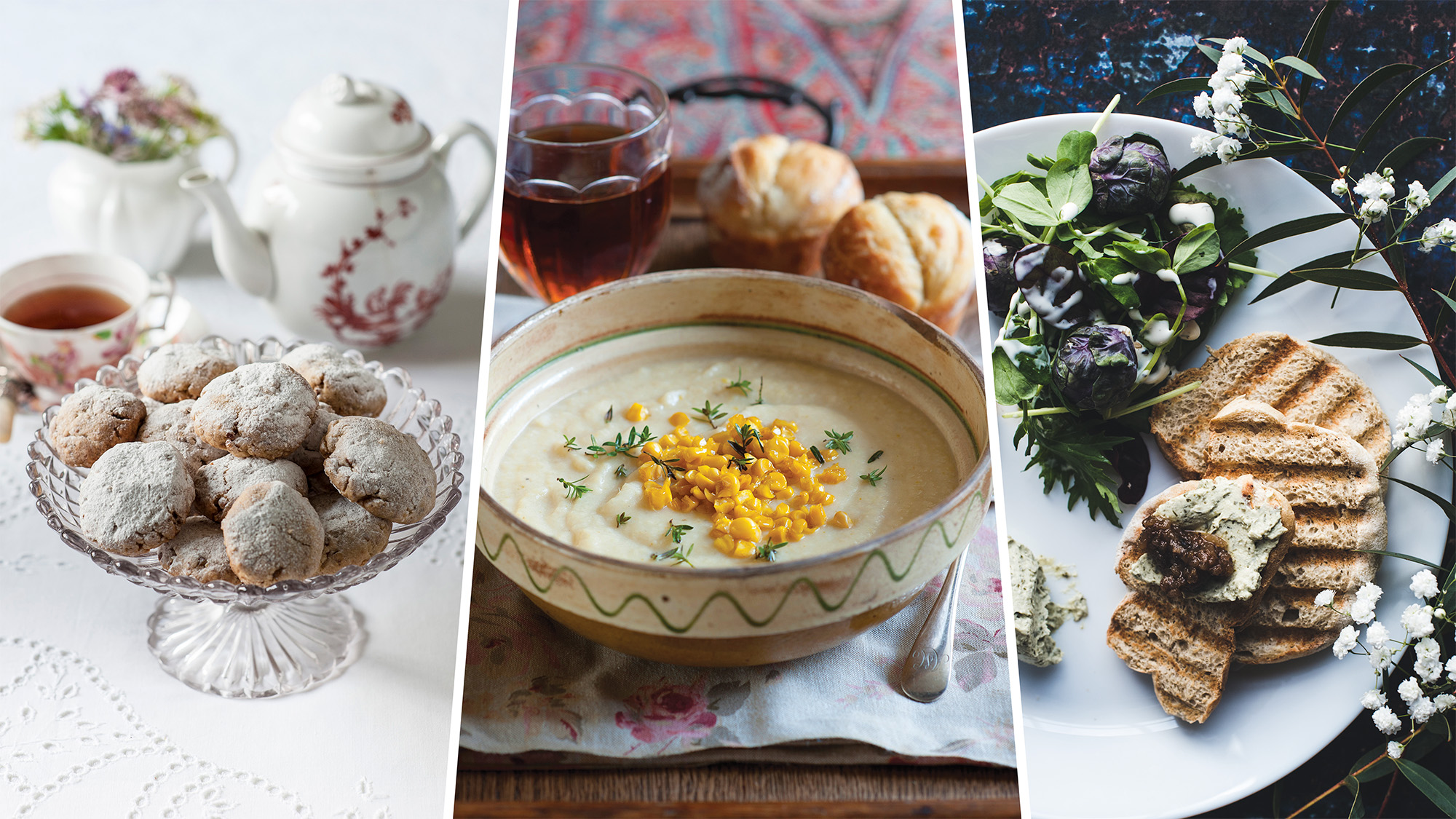
To celebrate World Food Day, I've collected a selection of tips and tricks from professional food photographers whose job it is to capture truly scrumptious captures.
Food photography is a subject that everyone can attempt in the comfort of their own kitchens. And while the best camera for food photography and the best lenses for food photography certainly help, a kit lens or 'nifty fifty' and a sturdy tripod are really the only essentials needed to capture stunning 'foodie' images.
The best part is, once you've wrapped the shoot, you can tuck in! It would be a shame for all those tasty treats to go to waste, after all…
This article was originally featured in N-Photo: The Nikon Magazine (issue 111), where a reader was invited to learn alongside the pro in question. Who coached them to take the excellent Super Shots (below)!
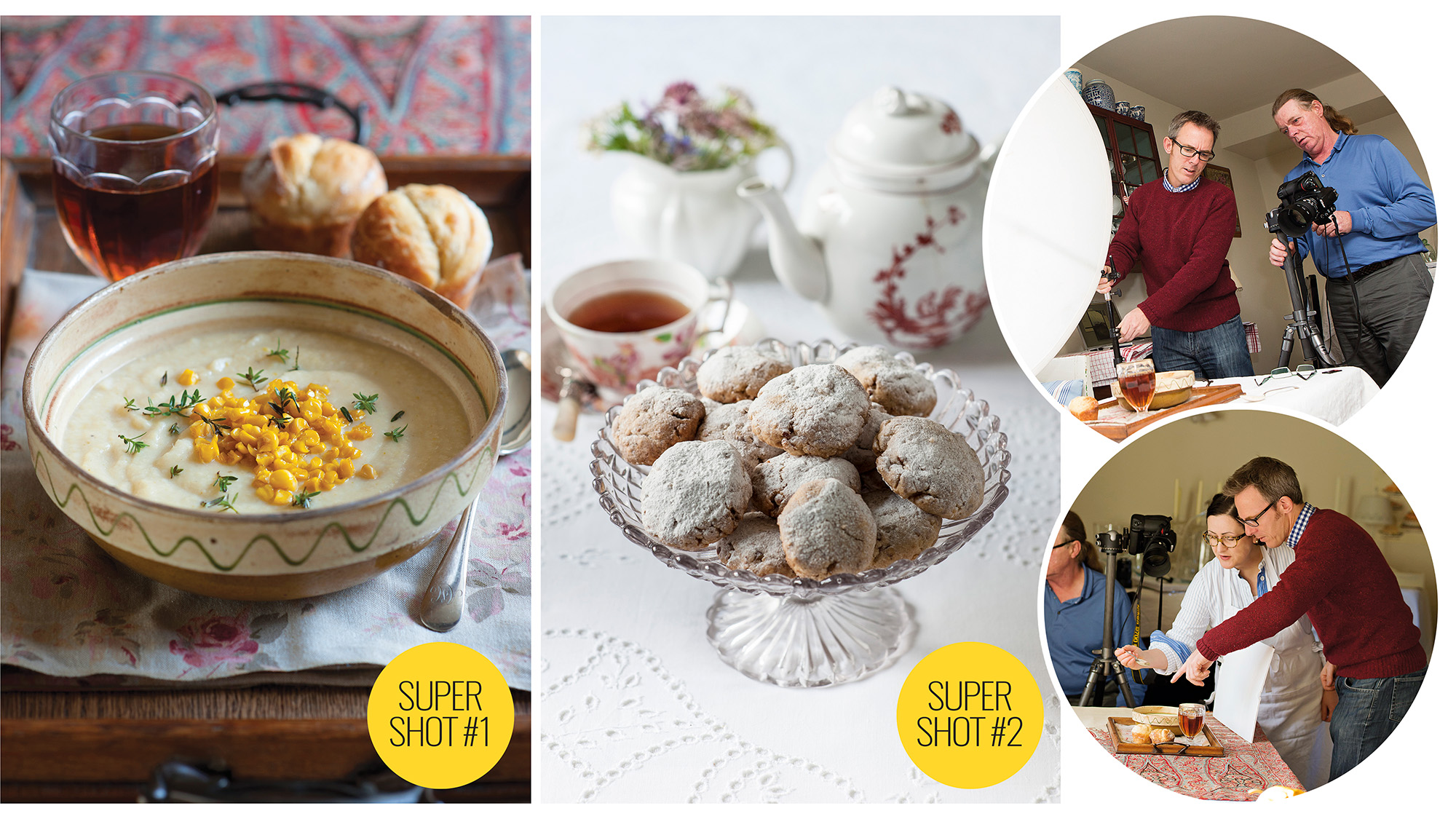
Professional food and garden photographer Jason Ingram took N-Photo reader Mick Thurman under his wing. They were joined by Silvana de Soissons, their stylist for the day, who cooked and sourced all the ingredients for the food to be photographed.
Tip #1 – Tell a story
Mick told N-Photo: "Jason and Silvana explained that a good food picture tells a story – you need to set the scene for the dish. Here [above, left] the hearty celeriac, leek and shallot soup is presented as the ideal winter warming meal. The tray, cloth and accessories were all selected to work together, and the fried sweetcorn and fresh herbs were added to provide a touch of color. Even the drink was picked with its image-enhancing qualities in mind, as sherry apparently gives a better hue in such shots than wine."
Tip #2 – Frame within a frame
Trays are useful props. They can be used to create a frame-within-a-frame in which to construct your composition. There’s no need to show the whole tray, however; the suggestion that it is there is enough.
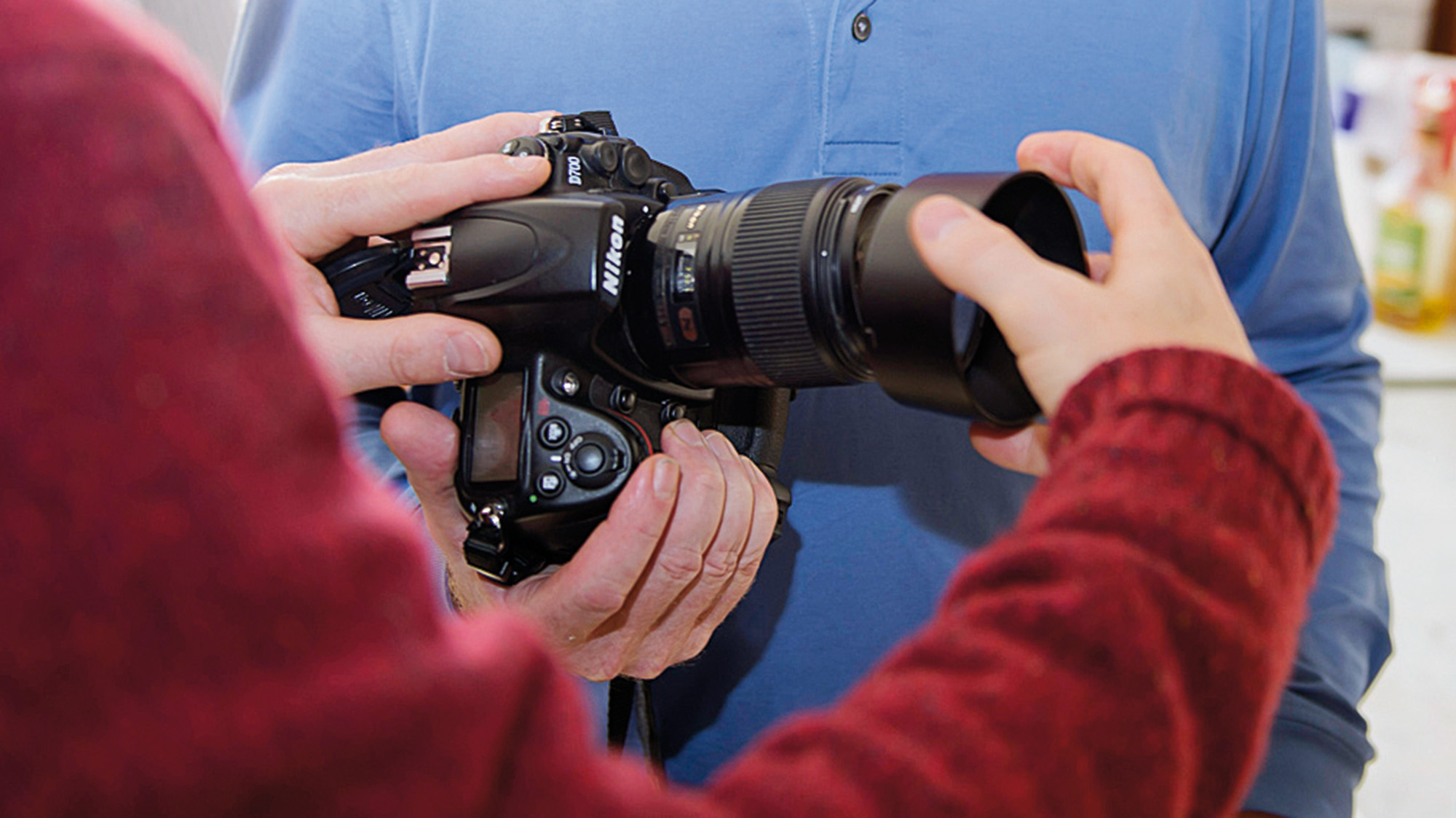
Tip #3 – Keep your hood on
Jason recommends that you always use lens hoods when photographing food, as flare can be a particular problem when shooting with fast prime lenses at or near their maximum apertures. The use of a lens hood on Mick’s 85mm could have a small, but significant, effect on the resolution and saturation of his photographs.
Tip #4 – Pick your focus point with care
When using a shallow depth of field you need to pick where to focus with care. Jason and Mick chose the biscuit to focus on in Super Shot #2, then checked the focus on the laptop.
Tip #5 – Introduce some used props
One of the keys to successful food photography is to have a wide range of props with which to style your shots, and Silvana’s home has become an incredible museum of beautiful bowls, sieves, tablecloths, plates, spoons, and much more over her years of collecting cookware. She says that you always need to haggle: “One way of getting cheaper pieces is to buy those that are chipped or cracked – the imperfections won’t usually show in the shots.”
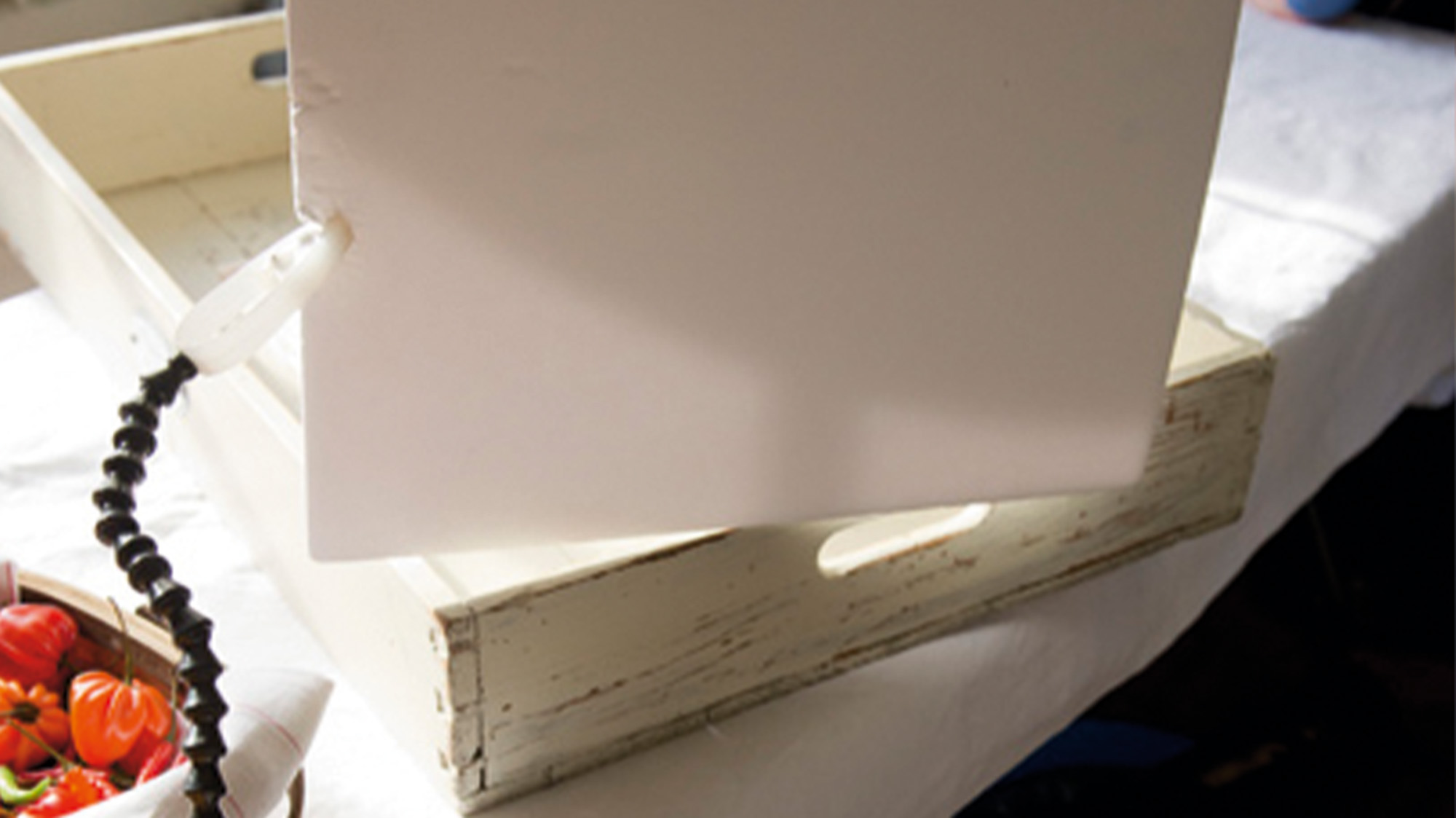
Tip #6 – Use a clamp like the Wimberley Plamp
The Plamp is an ingenious device that Jason uses in garden photography for holding plant stems in position; it stops them moving around in the wind. There are clamps on either end of a multi-jointed arm – one end attaches to the plant and the other to a tripod. Inside, Jason uses the Plamp for holding small reflectors in place. To fill small areas he uses sheets of A3 5mm foamboard. One end of the Plamp attaches to the table, and the other to the foam.
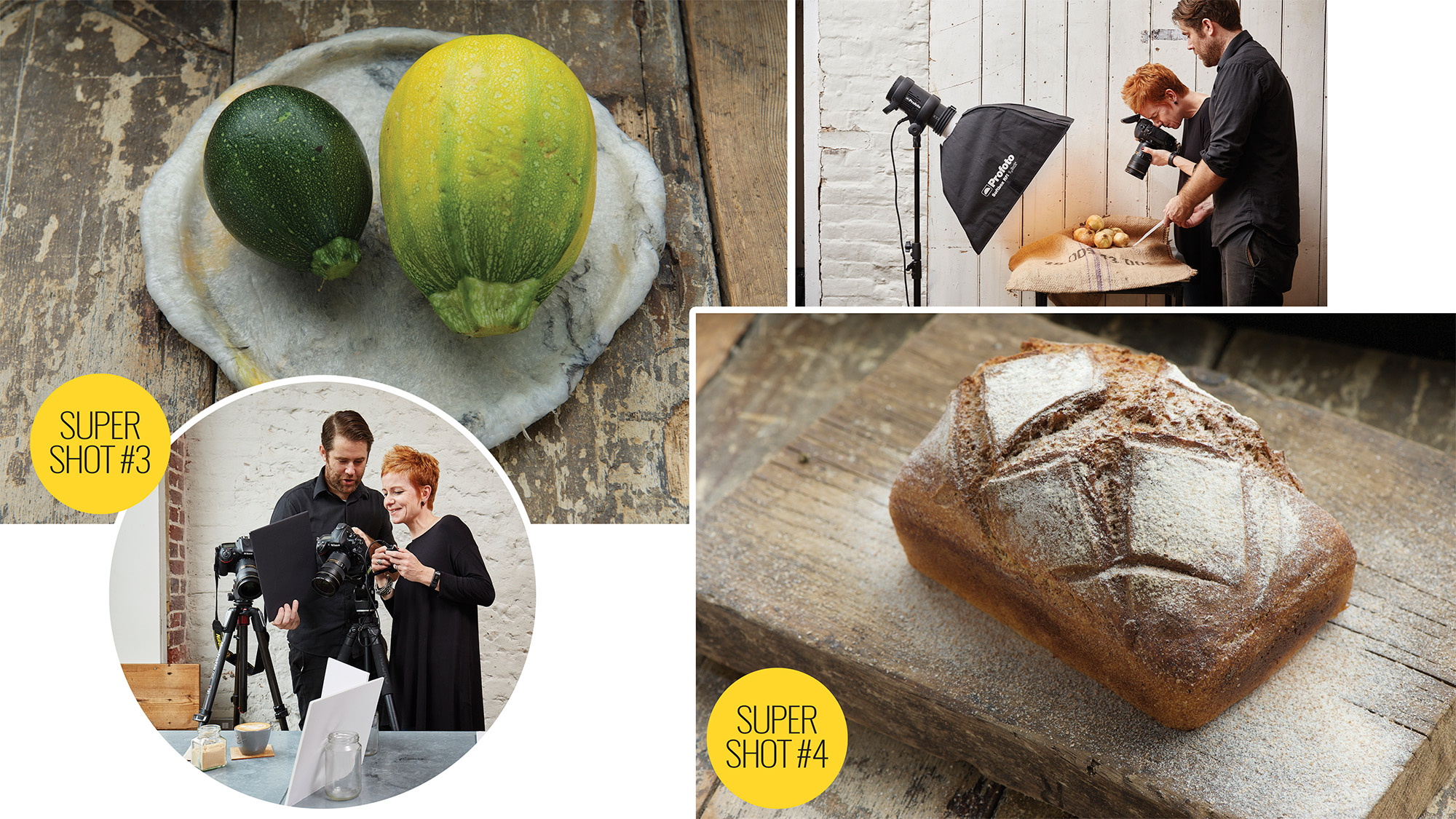
Pro food photographer, Olly Hearsey, joined N-Photo reader Caroline Wadey at Brighton restaurant Silo, which had the advantage of a professional kitchen – and chefs – to prepare food to be photographed…
Tip #7 – Slow down and consider each image
Caroline told N-Photo: "Olly suggested we start by creating a scene. We kept it simple with two marrows next to a massive window, then we used reflectors to fill in the shadows. I normally push my ISO up to ISO4000 and ‘spray and pray’ in the hope that I’ll get a shot that’s usable, but Olly made me realize that I was sacrificing quality for quantity. By taking a moment to think, he assured me, I’d end up with better photos."
Tip #8 – Move into the light
Light from a large window is great, especially when it’s overcast outside. A cloudy day diffuses the light, which is perfect as it produces soft shadows, whereas bright, direct sunlight will introduce hard, harsh shadows. It’s hard to balance the exposure in direct sunlight, too, with deep shadows and bright highlights pushing the extremes of the dynamic range. Olly used mountboard as a reflector; it’s great for bouncing light back into your subject. You can use one piece, two or even more, depending on your requirements.
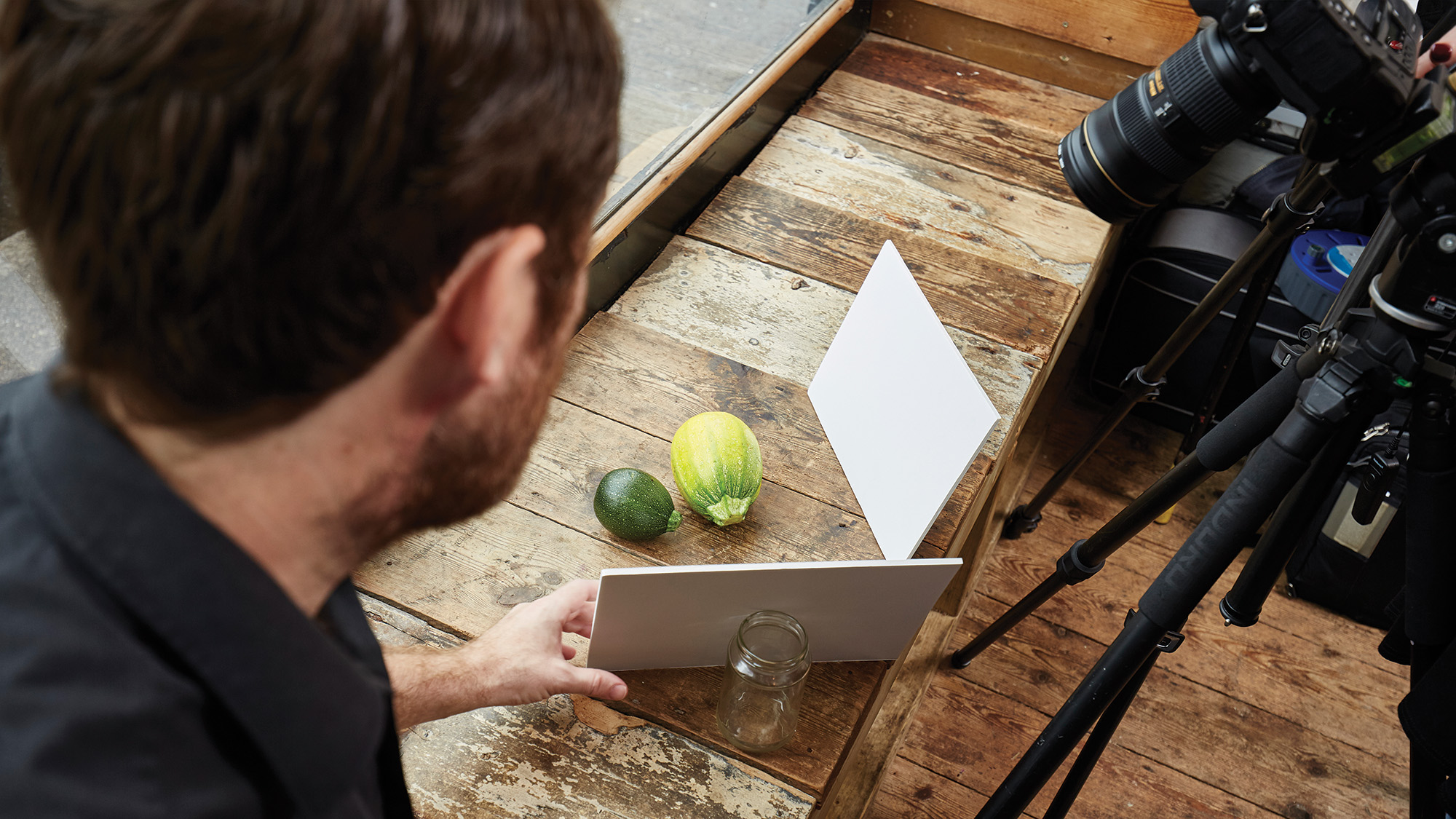
Tip #9 – Light it up
If the weather isn’t with you, you don’t have large windows that let in ample light, or you want to shoot at night, use a studio light. Move the light off-camera – to do this you should have a light that’s capable of being triggered by a hotshoe-mounted wireless transmitter. Cheap wireless triggers can be bought for £15/$35. Use a softbox or umbrella to soften the light. Studio lights will also have a modeling lamp, which enables you to focus easily, and also shows how the light will fall on your subject, so you can preview the effect of any changes.
Tip #10 – Give your composition room to breathe
Composition depends on what’s in your scene and what you want to focus on. For Super Shot #4, Caroline focused on the bread's cracking crusty top. Don’t bring the subject too close to the edge of the frame. If you leave some area around the food to let it breathe, this will increase your cropping options in post-production. If you’re too close, move back and recompose. Angling the bread gives you a more artistic three-dimensional look, and helps make shadows more pronounced. You can also show more of the produce than if you shoot straight on.
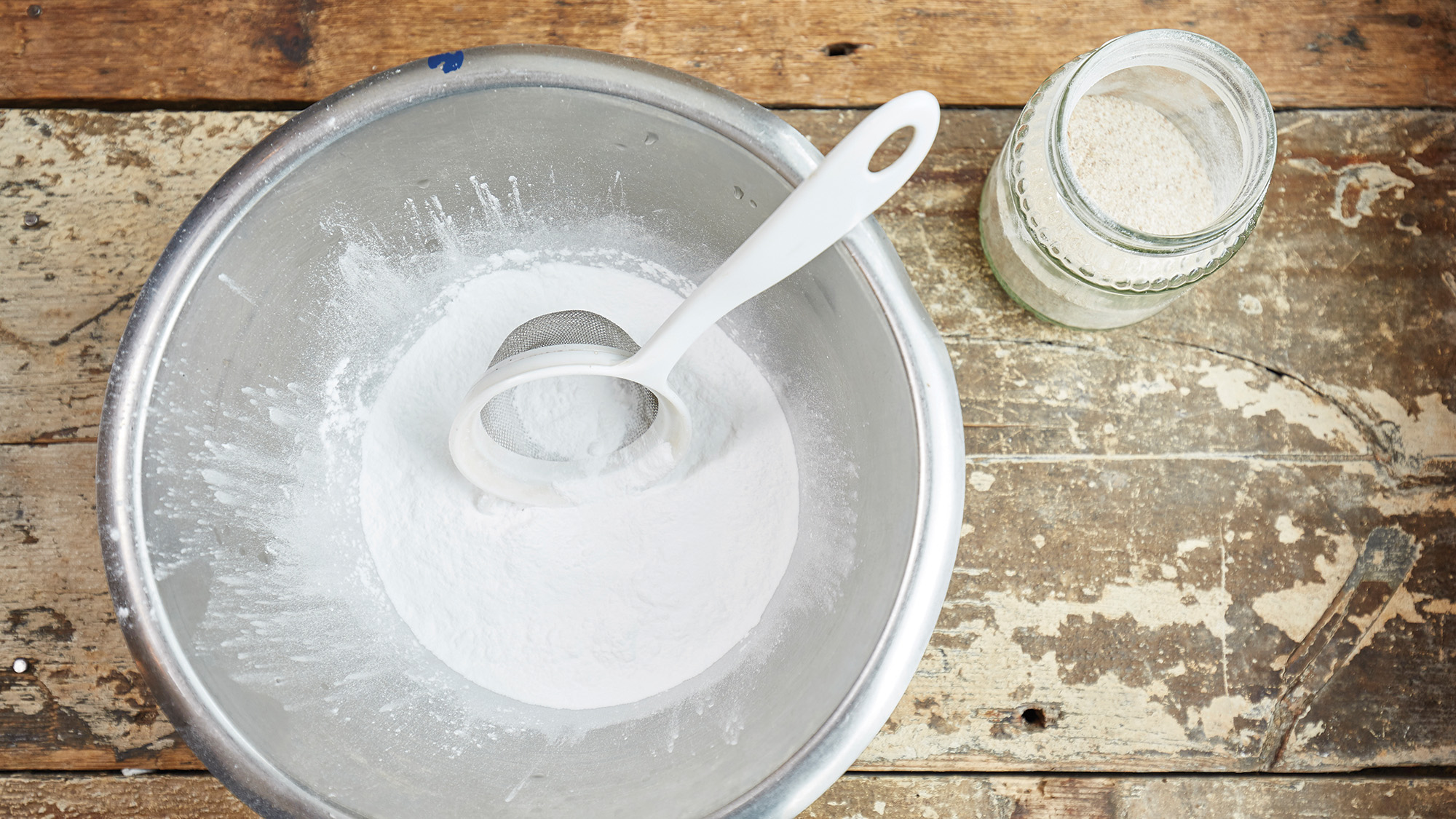
Tip #11 – Use a sieve
A small sieve is so useful in food photography. If you try spreading flour over your food by hand you run the risk of it falling in clumps and spoiling the image, but if you sieve flour it’ll be nicely diffused. It adds another layer of texture and detail to what you already have.
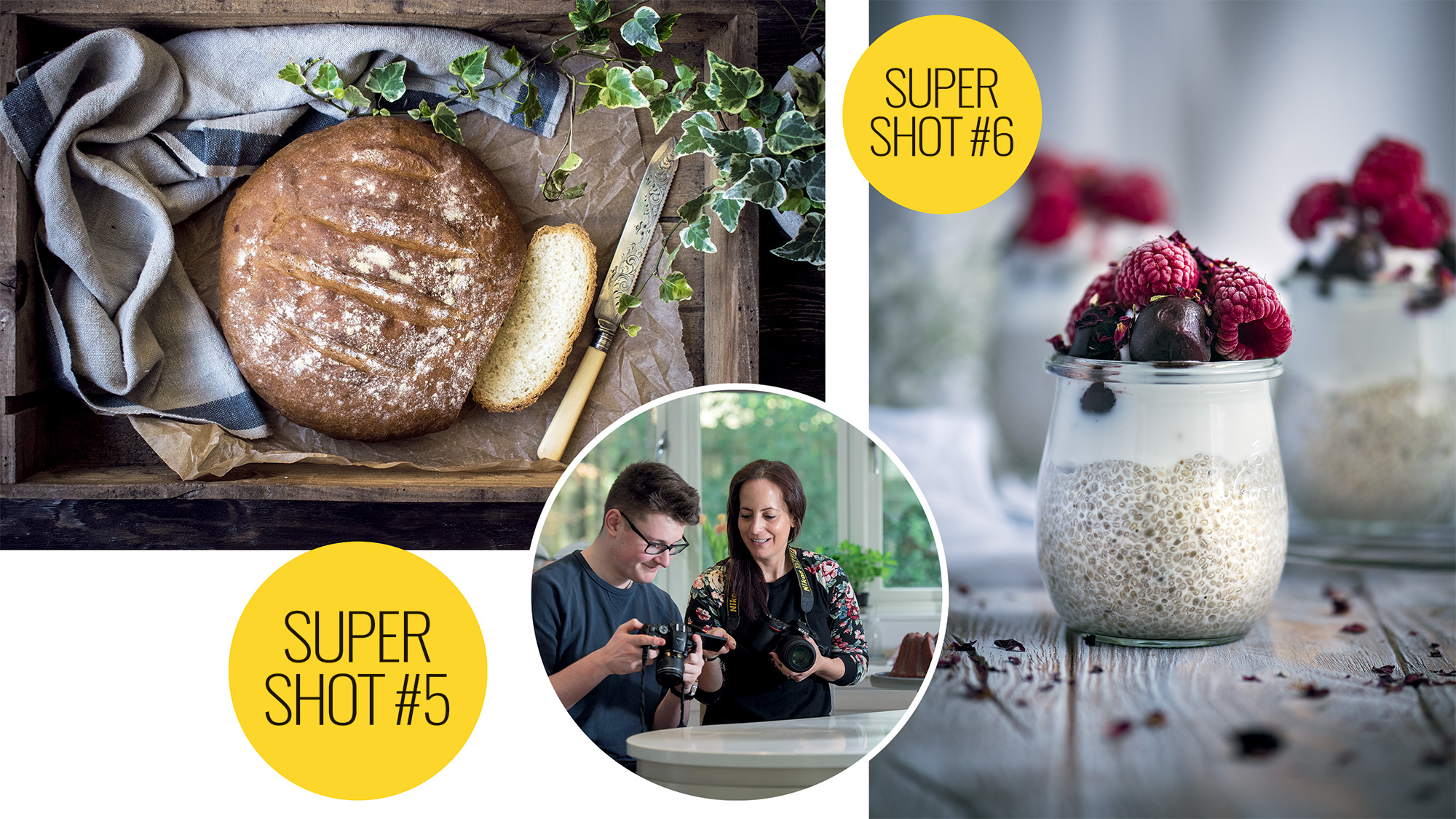
Full-time blogger and food photographer, Donna Crous, works with publishers photographing recipe books and brands for recipe development. N-Photo reader and food blogger, Benji Millar, arrived having already baked biscuits, bread and other tasty treats especially for the shoot…
Tip #12 – Balance the scene
Benji told N-Photo: "When I’m getting my food ready I’m already visualizing the end result and that influences the way I style the board. I wanted to make an image that looked as if this freshly baked bread was about to be served up. I cut the end of the loaf and used that as a prop beside the knife. I used my 18-55mm at 30mm to include the whole of the bread box, and Donna suggested I include a little bit of ivy in the right-hand corner of the frame to balance the towel wrapped around the bread on the left."
Tip #13 – Giraffe pose...
Stand with your legs either side of your food on the ground. It’s important to make sure the image sensor is parallel with the surface you’re shooting. Making it perfectly symmetrical in this way means the depth of field is maximized from top to bottom. Also, if the camera is tilted slightly, one side of the food is closer to the sensor than the other and so will appear larger in the final shot.
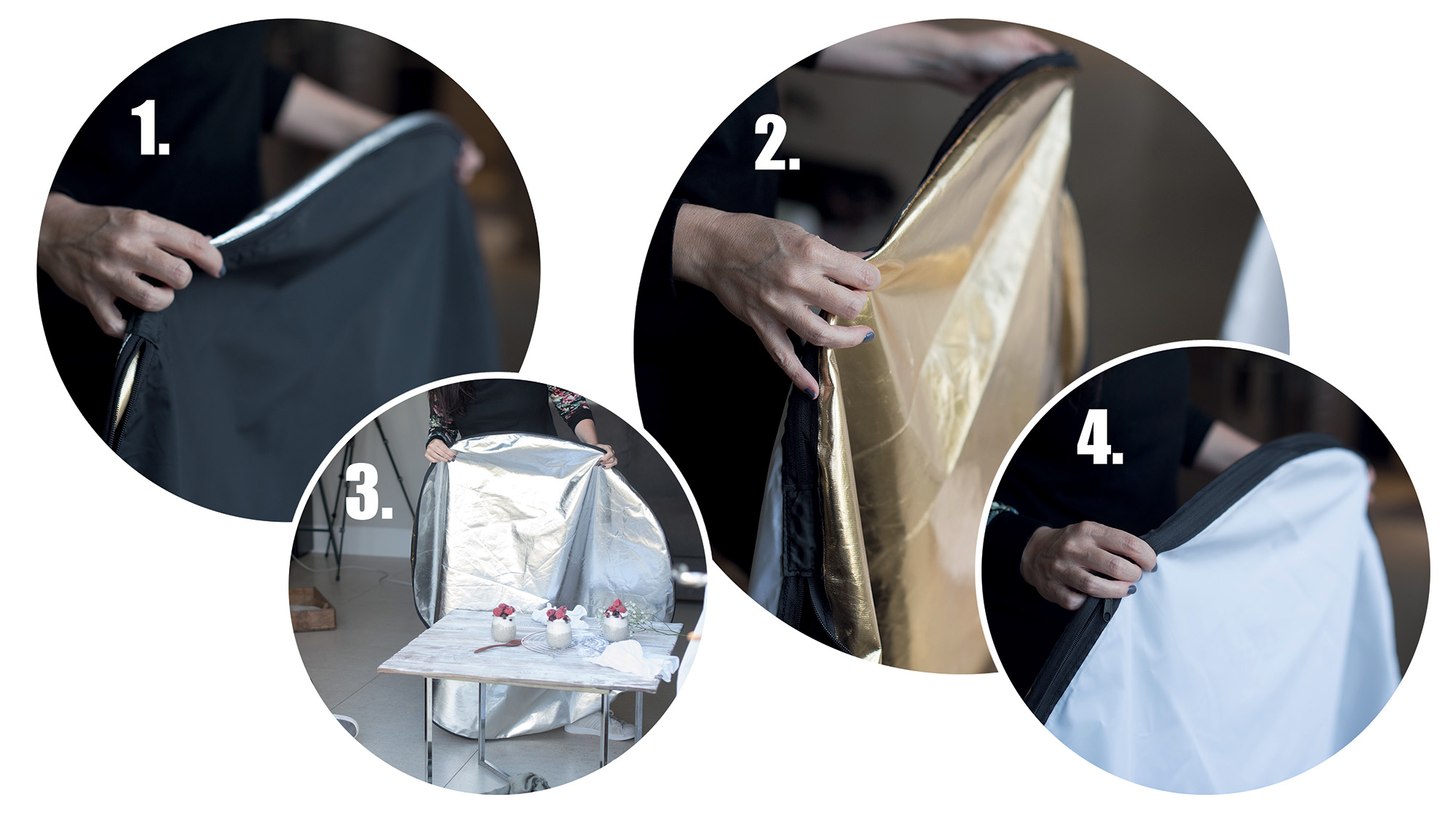
Tip #14 – Use a reflector
When shooting using a window as a light source, the subject will be backlit, so you’ll need to use a reflector [above] to bounce light back at it to fill in dark shadows, but what effect do different-colored reflectors have?
1. Black is designed to absorb the light and reduce reflected light from other surfaces.
2. Gold fill is rarely used in Donna’s style of food photography, but it can warm up shadows.
3. Silver fill is more intense and is better to use when you’re faced with strong, direct sunlight.
4. White fill is the most natural way to bounce light as it doesn’t discolor the light.
Tip #15 – Use a shutter release
Benji found that the light was fading during certain setups because the sun went behind clouds. His ISO was already quite high so Donna suggested he use a tripod and remote shutter release to allow a longer shutter speed without the danger of camera shake.
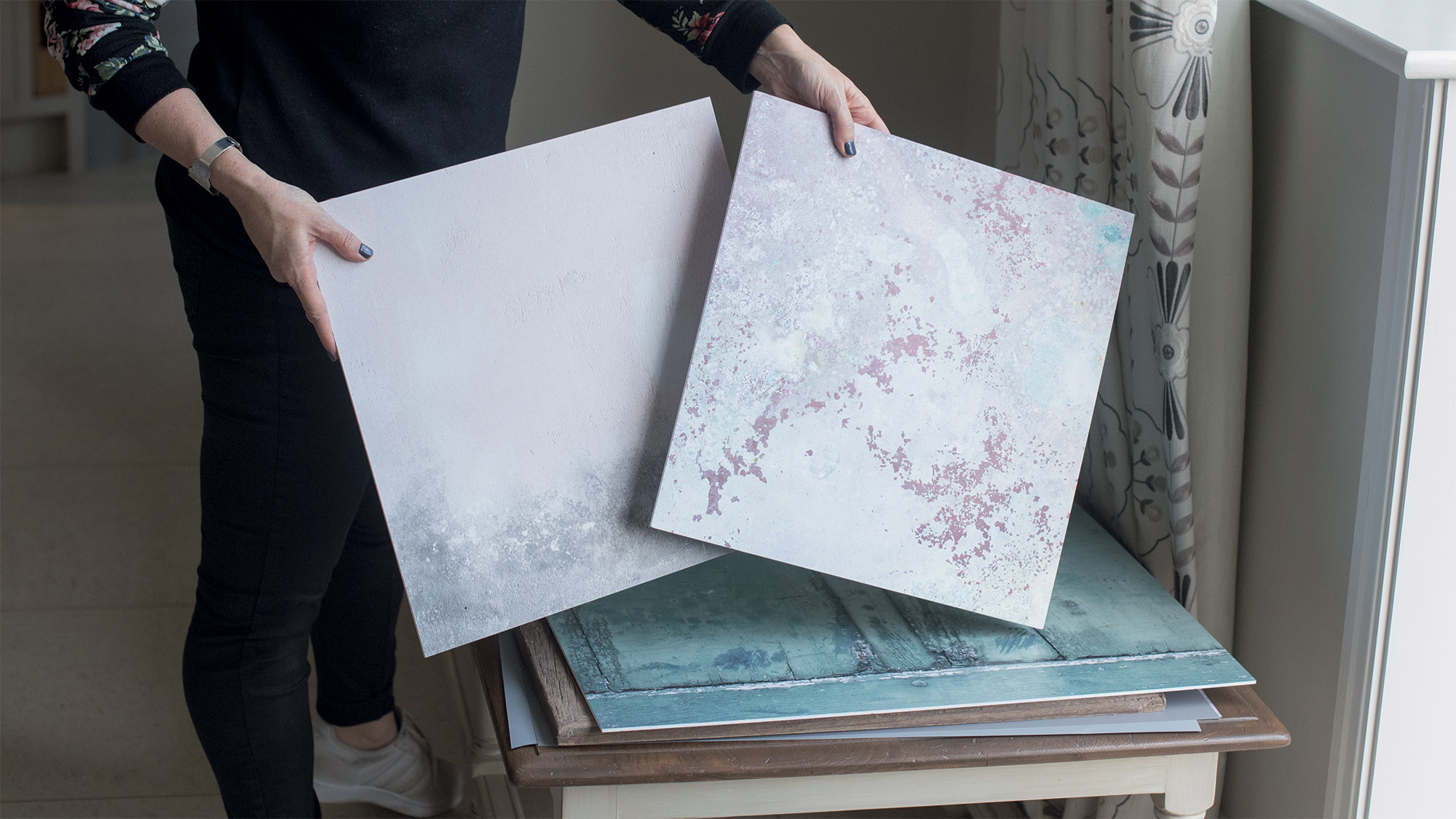
Tip #16 – Photoboards
Donna uses waterproof, heat-resistant photoboards, meaning you can put hot food on them without fear of damage. She also uses a wide selection of convincing flexible background prints from Capture by Lucy, as it’s easy to wipe down the boards afterward.
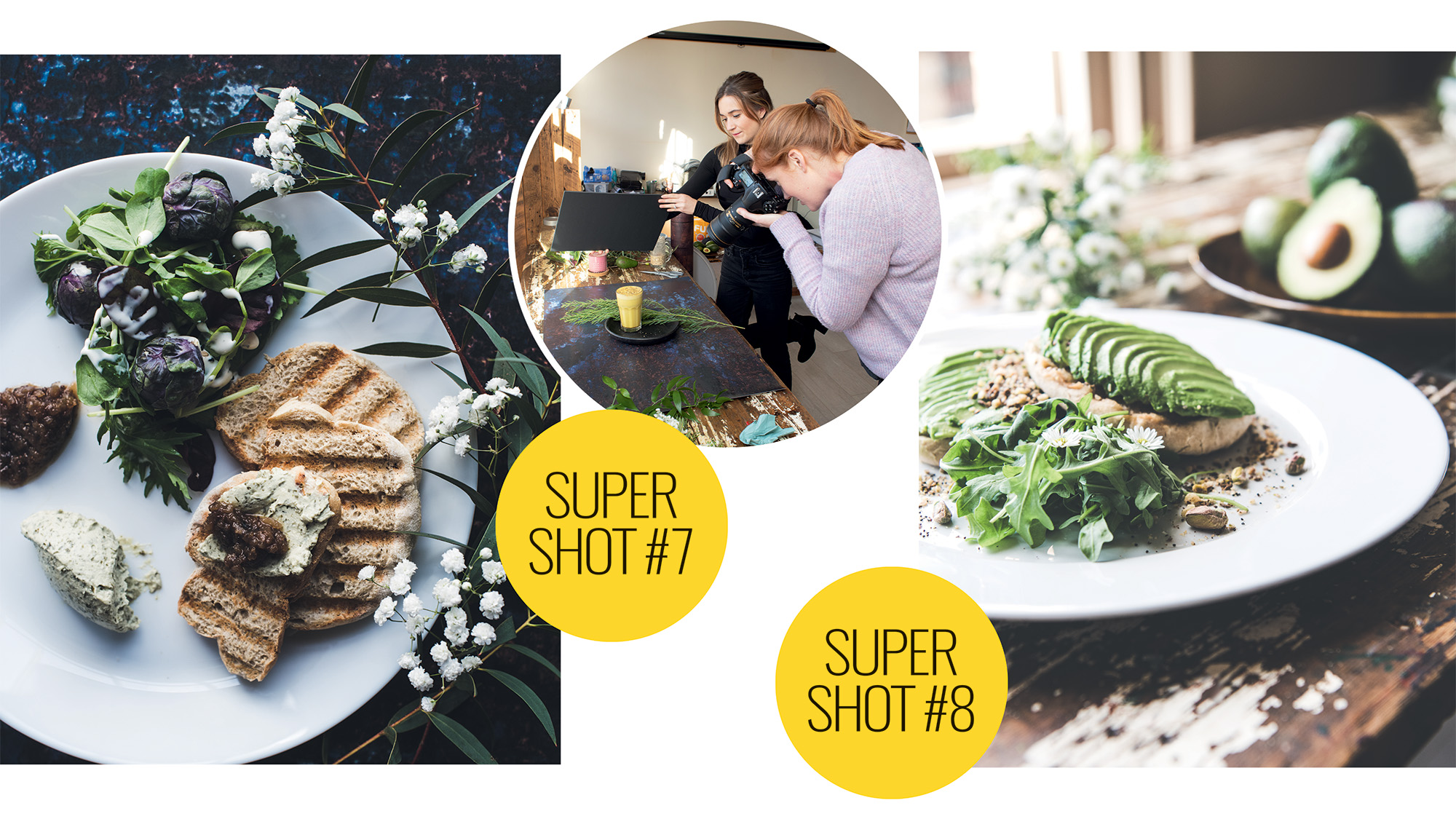
Freelance photographer and stylist Victoria Campbell and N-Photo reader, Hannah Daniel, spent the day on-location in the kitchen at Apteekki, a plant-based health and nutrition cafe in Melton Mowbray, shooting next to the large, bright windows, where the chefs served up a variety of scrumptious dishes to shoot…
Tip #17 – Crop in to focus on the food
Hannah told N-Photo: "This shot [above, left] combines everything I learned throughout the day. A top-down view allows us to see the whole plate, but I’ve cropped in close to keep the focus on the food. It looks like someone’s about to take a bite, because the toast has been spread with pâté and chutney."
Tip #18 – Diffuse harsh light
In the afternoon the sun had crept around to the front of the building, with some direct sunlight spilling into the shot. So Hannah used the diffusion panel built into a 5-in-1 reflector. After unzipping the reflector and removing the diffuser, she placed it up against the window to soften the light.
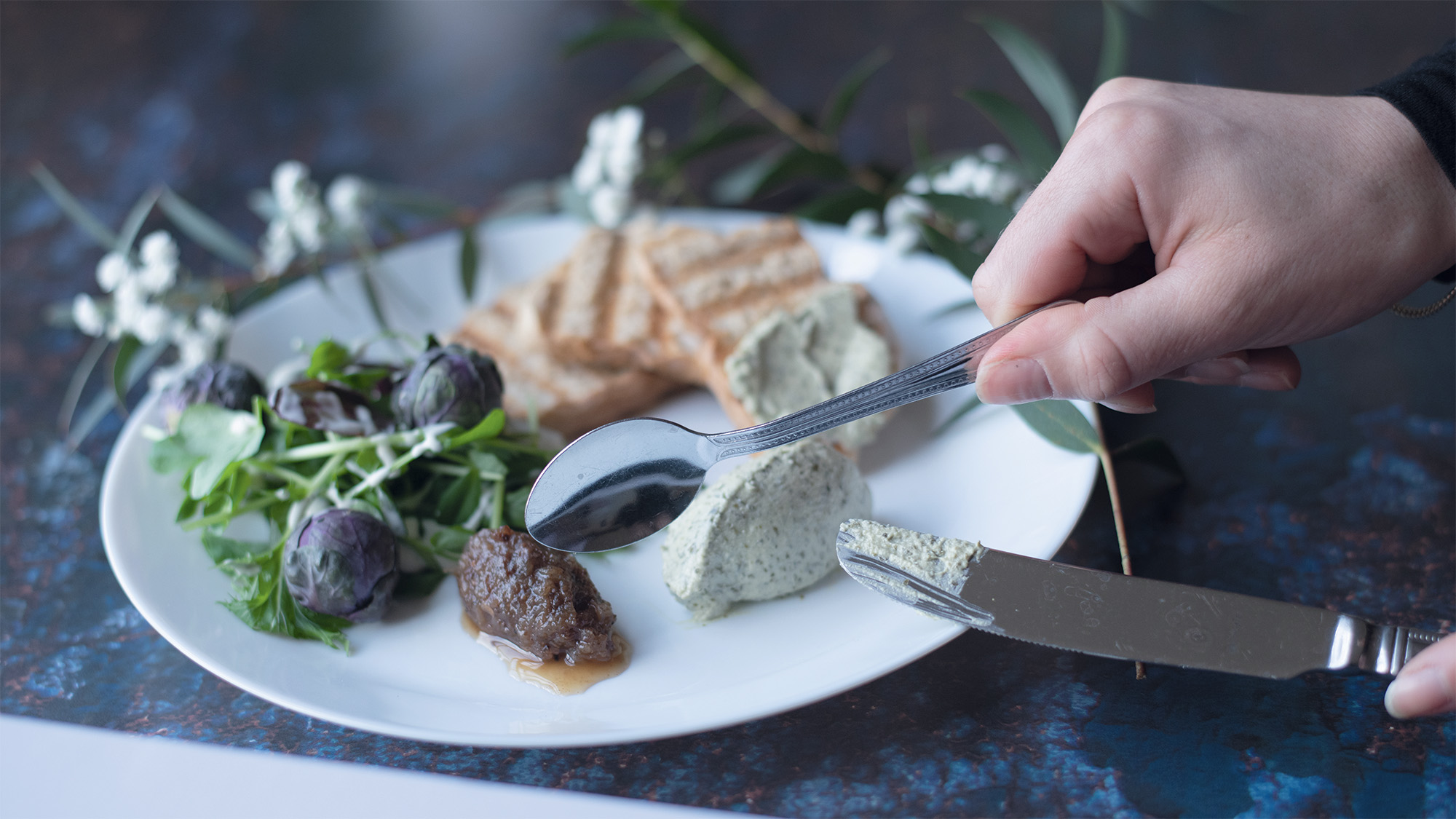
Tip #19 – Take the time to style your dishes
The chefs did a great job of making the food look good, so Hannah first took some photos as it was presented. Then, after she got those shots in the bag, she experimented with the look of it. Here [above], Victoria suggested she split the pâté with a knife but then spread it over the toast with the back of a spoon to give it a smoother, more pleasing texture.
Tip #20 – Don't mix light sources
Victoria turned off the overhead strip lighting because it was contaminating the white balance of the light over the food. With the lights turned off, the Nikon could precisely render color tones – especially important with food photography.
Tip #21 – Add layers to the scene
To draw the eye through a scene it’s important to layer up the shot – you need something in the foreground, mid-ground and background to keep it looking interesting throughout the frame, especially when shooting across the food, rather than from above. Victoria placed some avocados behind the dish and asked Hannah to shoot with a wide aperture so that there would be some out-of-focus – but still clearly recognizable – texture in the background of the shot.
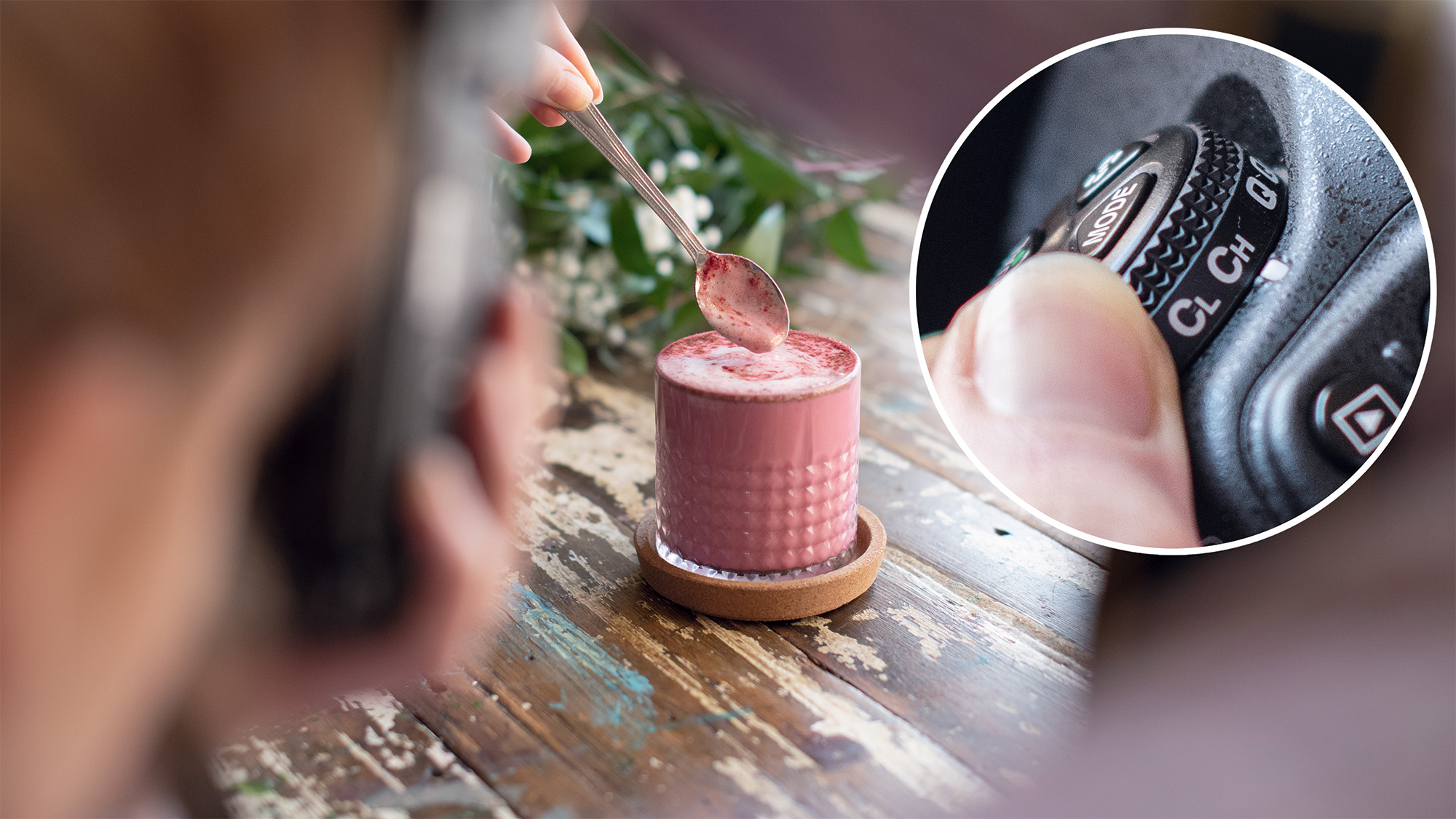
Tip #22 – Continuous drive mode
Alongside the food the pair also tried some pouring shots with drinks. As Victoria was pouring the drink off the teaspoon, Hannah used Continuous drive [above] to take multiple images during the pour. This meant she could cherry-pick her favourite photo afterwards, instead of trying to nail one shot during the action.
If you're a food photography lover, then check out the best reflectors and the best tripods.







